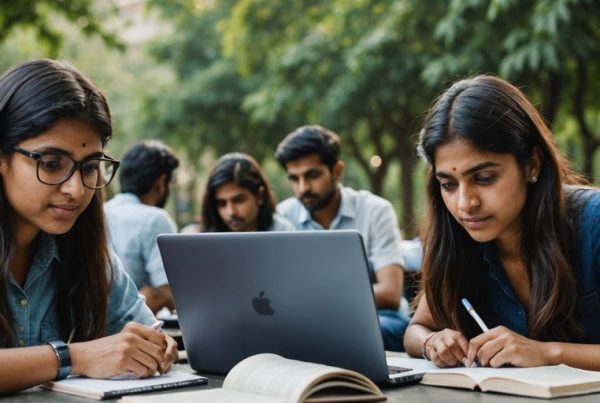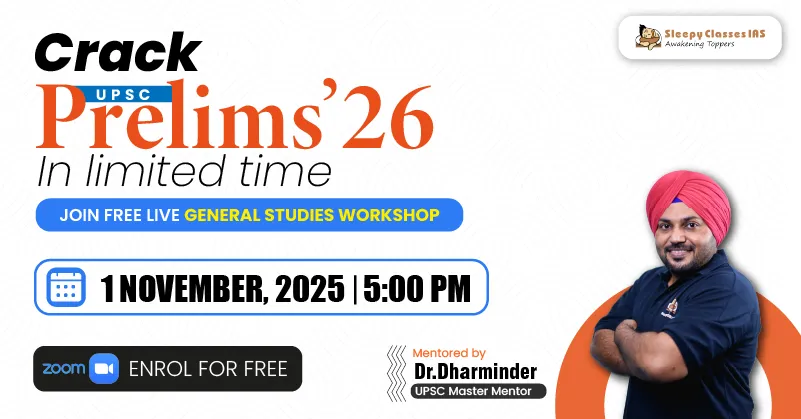Women in Indian politics have come a long way, but they still face many challenges. From early pioneers who broke barriers to modern leaders making strides, the journey has been both inspiring and difficult. Despite laws and policies aimed at promoting gender equality, societal norms and structural issues continue to hinder women’s full participation in politics.
Key Takeaways
- Women in India face ongoing challenges in politics due to deep-rooted societal norms and structural issues.
- Despite progress, gender discrimination, violence, and unequal pay remain significant barriers.
- Women’s representation in Parliament is a key measure of progress toward gender equality in politics.
- Support from political parties is crucial for women to advance in their political careers.
- While laws to protect women exist, their effective implementation is still lacking.
Historical Context of Women in Indian Politics
Early Pioneers and Trailblazers
In the early days, women in India faced many challenges, but some brave women stepped up to lead. These early pioneers broke barriers and set the stage for future generations. Their efforts laid the groundwork for women’s participation in politics.
Post-Independence Era
After India gained independence, more women began to enter politics. They worked hard to address issues like development and corruption. However, they still faced many obstacles due to deeply rooted societal norms and structural barriers.
Modern-Day Milestones
Today, women in India have achieved significant milestones in politics. They have become leaders and role models, inspiring others to follow in their footsteps. Despite these achievements, women continue to face challenges such as gender discrimination and violence. The journey is ongoing, but the progress made so far is commendable.
Barriers to Women’s Political Participation
Societal Norms and Gender Roles
In India, societal norms and gender roles often limit women’s political participation. Traditional views on gender roles can restrict women’s opportunities to engage in politics. Many believe that a woman’s primary role is to manage the household, which leaves little room for political involvement.
Violence and Intimidation
Violence and intimidation are significant barriers to women’s political participation. Women who enter politics often face threats, harassment, and even physical violence. This hostile environment can discourage many women from pursuing political careers.
Economic and Educational Disparities
Economic and educational disparities also play a crucial role in hindering women’s political participation. Many women lack the financial resources and educational background needed to compete in the political arena. This economic and educational gap makes it difficult for women to gain the skills and confidence required for political leadership.
Overcoming these barriers is essential for achieving gender equality in Indian politics.
| Barrier | Impact |
|---|---|
| Societal Norms and Gender Roles | Limits opportunities for political engagement |
| Violence and Intimidation | Discourages women from entering politics |
| Economic and Educational Disparities | Hinders skill and confidence development |
Addressing these challenges is crucial for increasing women’s political participation in India.
Legislative Measures and Policies
Reservation Policies
India has introduced several government schemes for women empowerment to ensure their active participation in politics. One of the most notable is the reservation of seats for women in local governance bodies, known as Panchayati Raj Institutions. This policy mandates that a certain percentage of seats be reserved for women, encouraging their involvement at the grassroots level.
Legal Protections
While India has made significant strides in enacting laws to protect women, the effective implementation of these laws remains a challenge. Legal protections include laws against domestic violence, sexual harassment, and discrimination. These laws aim to create a safer and more equitable environment for women in politics.
Implementation Challenges
Despite the existence of these policies and protections, real-time issues such as lack of development and corruption often hinder their effectiveness. Additionally, societal norms and structural barriers continue to pose significant challenges. Ensuring that these laws and policies are effectively implemented requires continuous effort and monitoring.
The Swadhar Greh scheme is a government project to empower women in India by providing them with shelter, food, clothing, and social, economic, and health support.
Women’s Representation in Parliament
Women’s representation in India’s Parliament is a key measure to see how well the country is doing in closing gender gaps. Despite a greater push for women’s participation in electoral politics, of the total elected members in the 18th Lok Sabha, only 13.6% or 74 MPs were women. This shows that there is still a long way to go.
Current Statistics
| Lok Sabha | Total Seats | Women MPs | Percentage |
|---|---|---|---|
| 18th | 543 | 74 | 13.6% |
Comparative Analysis with Other Countries
When compared to other countries, India’s percentage of women in Parliament is still low. For example:
- Rwanda: 61.3%
- Sweden: 47.3%
- South Africa: 46.5%
Impact on Policy Making
Having more women in Parliament can lead to more focus on issues like education, healthcare, and women’s rights. Women MPs often bring different perspectives and solutions to the table, which can benefit everyone.
Increasing the number of women in Parliament is not just about fairness; it’s about making better decisions for the country.
Role of Political Parties
Patronage and Support Systems
Women in Indian politics often find it challenging to advance without the backing of influential patrons within their parties. Patronage networks play a crucial role in determining who gets nominated and supported during elections. This system can either help or hinder women’s political careers, depending on their access to these networks.
Internal Party Dynamics
The internal dynamics of political parties can significantly impact women’s participation. Many parties still operate in a male-dominated environment, where women struggle to find their voice. Efforts to include more women in decision-making roles are ongoing, but progress is slow.
Success Stories and Role Models
Despite the challenges, there are numerous success stories of women who have made significant strides in Indian politics. These role models serve as an inspiration for future generations. They demonstrate that with determination and support, women can overcome barriers and achieve political success.
The journey of women in Indian politics is a testament to their resilience and determination. While challenges remain, the progress made so far offers hope for a more inclusive future.
Grassroots Movements and Local Governance
Panchayati Raj Institutions
The Panchayati Raj Institutions (PRIs) are a cornerstone of local governance in India. They empower women at the village level, giving them a platform to voice their concerns and influence local policies. PRIs have been instrumental in grassroots mobilization, enabling women to participate actively in decision-making processes.
Community Leadership
Women in local governance often emerge as community leaders, addressing real-time issues such as lack of development and corruption. These leaders work tirelessly to bring about change, often facing significant challenges like discrimination and illiteracy. Their efforts are crucial in overcoming barriers to participation and ensuring that women’s issues are not relegated to the background.
Case Studies of Successful Initiatives
Several successful initiatives highlight the impact of women’s participation in local governance. For instance, in some villages, women-led councils have effectively tackled issues like sanitation and education. These case studies serve as inspiring examples of what can be achieved when women are given the opportunity to lead.
The role of women in local governance is not just about representation; it’s about making a tangible difference in their communities.
Media and Public Perception
Portrayal of Women Politicians
The media plays a crucial role in shaping the public’s view of women in politics. Often, the participation of women is either underrepresented or stereotyped. This portrayal can influence how society perceives female leaders and their capabilities.
Media Influence on Public Opinion
Media outlets have the power to sway public opinion significantly. Positive stories about women politicians can inspire more women to enter politics, while negative coverage can deter them. The media’s focus on real-time issues like lack of development and corruption often sidelines women’s issues.
Campaign Strategies and Media Engagement
Women politicians are increasingly using media to their advantage. Social media platforms allow them to connect directly with voters, bypassing traditional media filters. This direct engagement can help highlight their work and welfare schemes, marking a gender shift in Indian politics.
The participation of women at polling booths and as campaign workers is reshaping Indian politics, showing a significant gender shift.
Future Prospects and Recommendations
Strategies for Increasing Participation
To boost women’s participation in politics, targeted strategies are essential. These can include mentorship programs, leadership training, and awareness campaigns. Encouraging young girls to take an interest in politics from an early age can also make a significant difference.
Policy Recommendations
- Implement Quotas: Enforce gender quotas in political parties and legislative bodies to ensure a minimum level of female representation.
- Strengthen Legal Protections: Enhance laws against gender-based violence and discrimination to create a safer environment for women in politics.
- Economic Support: Provide financial assistance and resources to women candidates to level the playing field.
Role of Civil Society and NGOs
Civil society and NGOs play a crucial role in advocating for women’s rights and political participation. They can offer training programs, create support networks, and lobby for policy changes.
The future of women in Indian politics looks promising, but it requires collective effort from all sectors of society to overcome existing barriers.
Conclusion
In conclusion, while women in Indian politics have made significant strides, they still face many challenges. From gender discrimination to violence and unequal pay, the road to equality is long and winding. Despite these hurdles, the increasing representation of women in Parliament is a positive sign. However, the effective implementation of laws protecting women and the support within political parties remain areas needing improvement. As India continues to grow and develop, it is crucial to ensure that women’s issues are not pushed to the background. Only by addressing these challenges head-on can we hope to achieve true gender equality in Indian politics.
Frequently Asked Questions
What challenges do women in Indian politics face?
Women in Indian politics face many challenges like societal norms, violence, and economic and educational barriers.
How has women’s participation in Indian politics evolved over time?
Women’s participation has evolved from early pioneers to significant milestones in modern times, but challenges remain.
What are reservation policies in Indian politics?
Reservation policies are laws that reserve a certain percentage of political positions for women to ensure their representation.
How does women’s representation in India’s Parliament compare to other countries?
India’s representation of women in Parliament is improving but still lags behind many other countries.
What role do political parties play in supporting women politicians?
Political parties can support women through patronage, internal dynamics, and by promoting role models and success stories.
What impact do grassroots movements have on women’s political participation?
Grassroots movements, including local governance and community leadership, play a crucial role in enhancing women’s political participation.







